Clancy Tucker's Blog, page 11
July 9, 2022
4 October 2022 - THE GRAVE IN THE ROAD - HEARNE, TEXAS

THE GRAVE IN THE ROAD
- HEARNE, TEXAS -
G'day folks,
This one-woman cemetery was a small civil rights victory.The town of Hearne is known as “The Crossroads of Texas” because it sits at the intersection of several highways and railroads. The little town used to be a hub of transport and commerce, but is now fairly sleepy pit stop. Amid the suburban houses and grassy lawns though, there is an unusual sight: a body buried in the middle of the street.


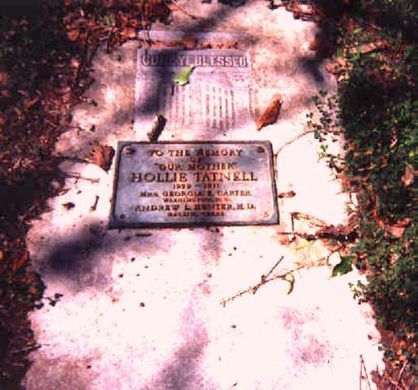
The lone grave is marked by a sizable oak and a two plaques set in an almond-shaped median. The first marker reads: “COME YE BLESSED”. The second: “TO THE MEMORY OF ‘OUR MOTHER’ HOLLIE TATNELL 1859 – 1911”, and below that, “MRS. GEORGIA E. GARTER Washington D.C. ANDREW L. HUNTER M. D. Marlin, Texas”.
According to the scant history that exists, Hollie Tatnell was born a slave in Texas. Upon her death in 1911, she was buried in Hearne’s colored cemetery, which had allegedly originated as a slave burying ground. Hollie would have been one of the last people interred at the cemetery as it was closed in 1912.
When real estate developers purchased the land in 1947 they edged out the families of color in the neighborhood, who were forced to exhume and rebury the remains of their ancestors in the cemetery. The only family that refused to budge was Hollie Tatnell’s children, Georgia and Andrew. The developers, eager to move forward, had to construct a median around Hollie’s diagonal grave. As proof of their triumph, the Tatnell children placed the second marker on their mother’s grave in addition to her original headstone.
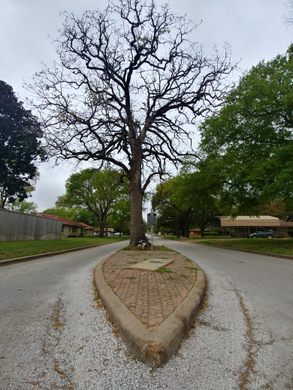
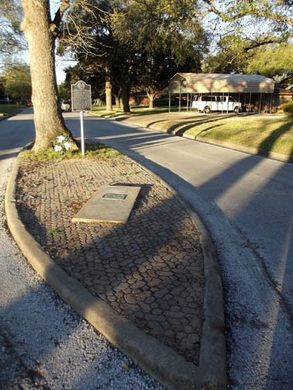
In 2007 the median also received a sign from the Texas Historical Commission, denoting it as a Historic Texas Cemetery despite only containing the remains of one person. “This single grave,” it reads, “serves as a reminder of the area’s early African-American community and of the sanctity of burial grounds.”
30 September 2022 - CHISINAU JEWISH CEMETERY
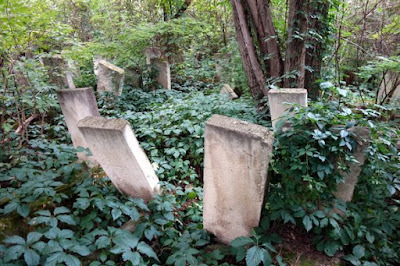
CHISINAU JEWISH
CEMETERY
G'day folks,
There is a mouldering Jewish cemetery hidden away in the capital of Moldova.In the outskirts of Moldova’s capital Chisinau, is a massive Jewish cemetery that lies in ruins.
A little known fact, even for Moldovans living in Chisinau, is that a large Jewish cemetery can be found in the city. In the end of the 19th century there was a large Jewish community of about in Chisinau, accounting for nearly half of the Jewish population of Bessarabia. It was one of the most vibrant Jewish communities in the region. But that would all change. Tensions grew in the city and led to a small pogrom in 1903 that resulted in the tragic deaths of over 40 Jewish citizens.
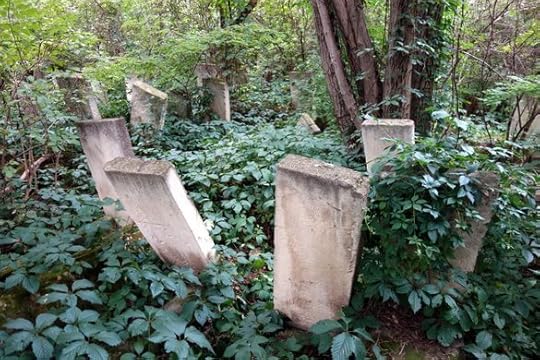
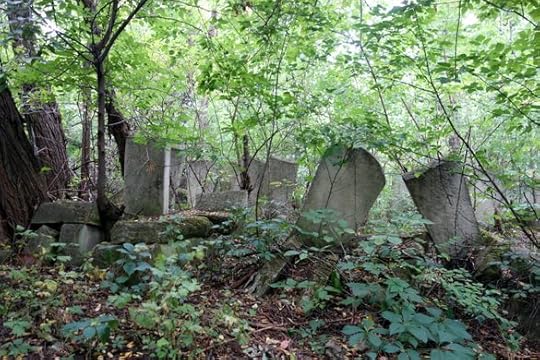
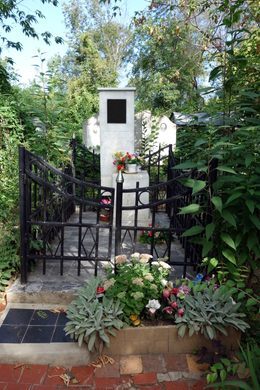
The 1930s marked the peak of Jewish life in Moldova. They had been granted citizenship in 1918 when Romania took control over Bessarabia and there were numerous Jewish schools and hospitals in the city. Unfortunately after 1941, around 147,000 Jewish Moldovans were deported to concentration camps, with a staggering 90,000 perishing.
By the end of the 19th century there were around 25,000 graves at the cemetery but it all fell into despair after WWII, with many of the structures being destroyed by bombing. Today much of it is covered by thick vegetation and a number of the graves don’t seem to have been visited for decades.

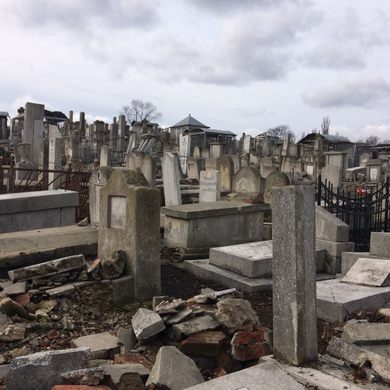
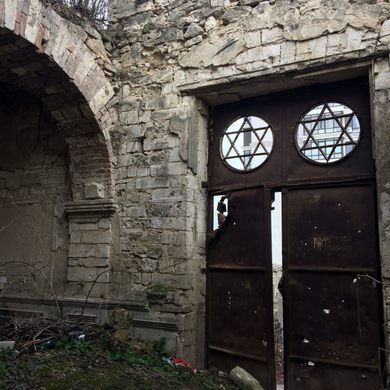
24 September 2022 - THE WINE CELLARS OF CRICOVA
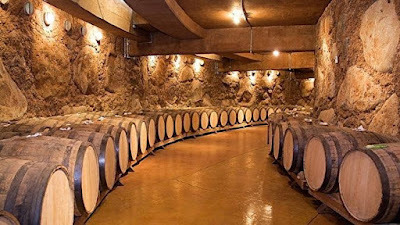
THE WINE CELLARS
OF CRICOVA
G'day folks,
Seventy-five miles of limestone caves host more than a million bottles of wine beneath a sleepy Moldovan town.Cricova takes the notion of a “wine city” to another level, in more ways than one. About 260 feet below this little-known Moldovan town, over 75 miles of limestone caves are home to about 1.3 million bottles of wine.
The fertile region surrounding the town of Cricova had no problem becoming a major source of wine for the USSR by the mid-1900s. They did have a problem storing all of it, however.
Conveniently, the excavation of vast amounts of limestone to build the nearby capital of Chişinău left a sprawling underground network of cool, dry caves, ideal for aging and storing wine. As more limestone was mined to build the city, more space was created underground to host an imperial collection of bottled wine. After Milestii Mici, another underground Moldovan winery, Cricova is the second-largest wine cellar on the planet.
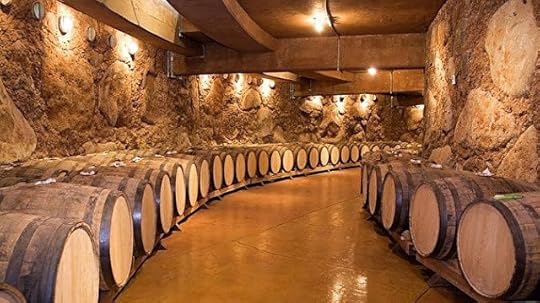
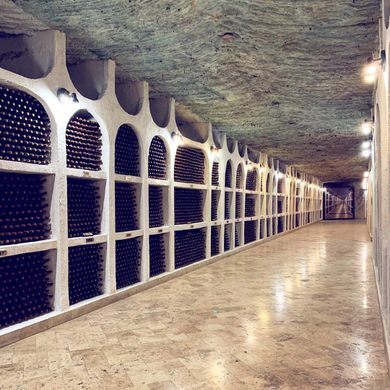

Today, the above-ground winery is a jack of all trades, producing more than 150 styles, including basics such as muscat, pinot noir, cabernet, and sauvignon blanc, but also unique local varieties such as rkaţiteli and aligote. The “streets” and “avenues” that make up the underground booze-storage metropolis are named for the wines they store, helping tour guides navigate visitors through the network by mini-train. The winery is most famous for producing a sparkling variety known as kodrinskoie, utilizing methods made famous by French monk Dom Pierre Pérignon. According to Balkan Insight, a team of five women rotates as many as 35,000 bottles of the sparkling vino 45 degrees in wooden slots to encourage the movement of sediments.
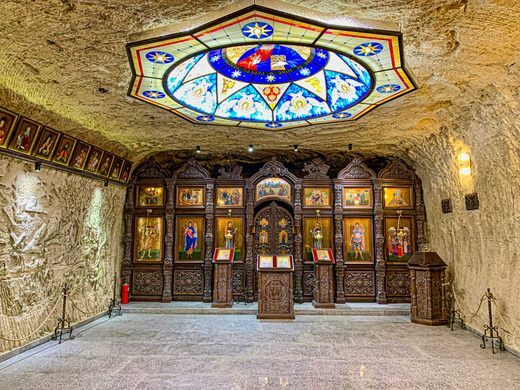
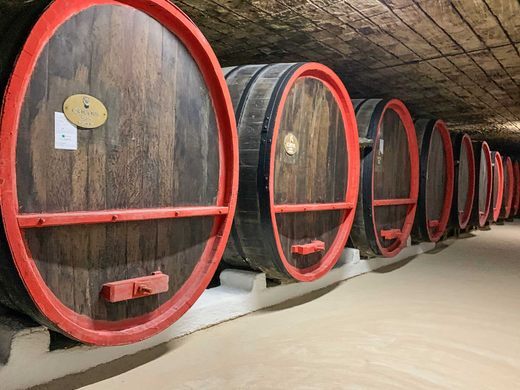
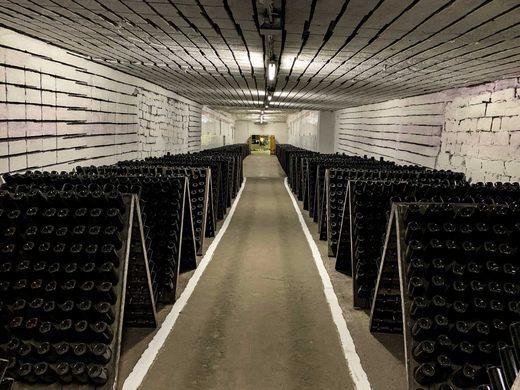
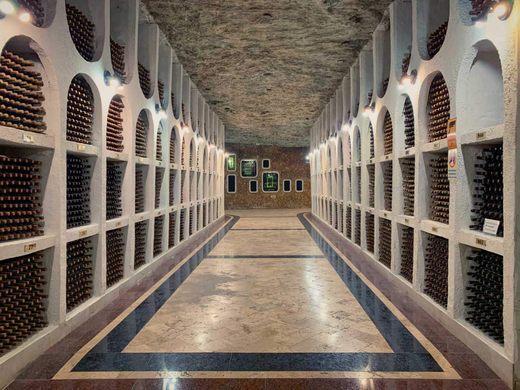
Though an over-the-top underground oddity, the site was made a visiting point for all official delegations to the USSR and, even after its collapse, still holds the collections of various political heavyweights. Angela Merkel, John Kerry, Joe Biden, and Petro Poroshenko all visited and were gifted private collection spaces. Vladimir Putin has an impressive assortment of wines here, and, according to Forbes, a gold-plated mini-car to take him through the tunnels. While no politician, the first man in space, Yuri Gagarin, is rumored to have gotten lost in the caves for hours (guides like to joke that it was easier for him to get into space than out of the wine cellar).
Perhaps most shockingly, the wine collection of Hermann Göring, one of Hitler’s henchmen, rests here, as well. After the Red Guard took Berlin, his collection of more than 2,000 bottles from regions occupied by Germany during World War II were brought here to continue aging.
After each tour, visitors can sample an array of wines in one of the facility’s five extravagant tasting rooms, including “The Sea Bottom,” a nautical-themed room; the “Presidential Hall,” meant to host official delegates; and the unambiguous “Fireplace Room.”
Feel free to purchase as much wine from the store as you’d like. Cricova’s not running out any time soon.
July 8, 2022
23 September 2022 - THE ANCIENT CAVES OF NOTTINGHAM, ENGLAND.
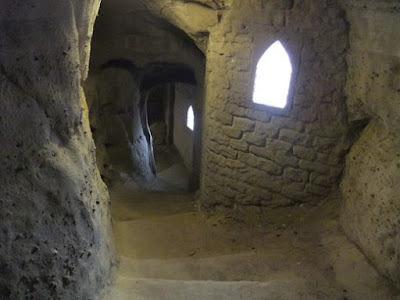
THE ANCIENT CAVES OF
NOTTINGHAM, ENGLAND.
G'day folks,
A labyrinthine underworld of tunnels and caverns hides beneath this city.Underneath the modern city of Nottingham is a large and ancient labyrinthine underworld. Over 800 caves, tunnels, and passages cut into the sandstone rock lurk beneath the city, and more are discovered every year.
The oldest recorded name for Nottingham is “Tigguo Cobauc,” which, in the pre-Roman ancient British language is thought to mean “Place of Caves.” The name is still appropriate today, as there are more caves underneath the city than any other in Britain. Nottingham sits on a ridge of soft sandstone hills, which in places have been cut into low cliff faces by the action of the River Leen and River Trent. The exposed soft crumbly rock is incredibly easy to cut and burrow into.


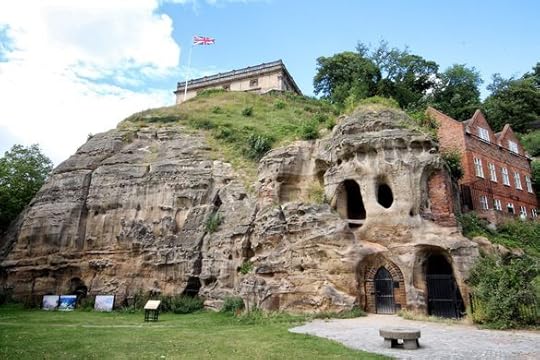

The caves were dug for many reasons: as workplaces, such as the medieval tannery that exists underneath a shopping mall; as homes, such as those at Sneinton hermitage; as secret passages and tunnels, such as those at Castle Rock; as storerooms, brewhouses, and public houses; as prisons and dungeons; and in more recent history, as air raid shelters during the Nottingham Blitz. Scattered across the city are small doors and gates, complete with rusty padlocks that cover access points into the greatly interconnected labyrinth.
The Nottingham Caves Survey, a project by researchers at Nottingham University to digitally map the caves, has seen many local homeowners come forward to reveal that they too have caves leading off into the subterranean maze from their basements or tucked away in the corner of their garden. Some have been surprised to learn that their particular cave was previously unknown. As recently as January 2017, a group of students living on one of the main roads into the city, Mansfield Road, discovered a series of steps leading down from their cellar into a previously unknown void under the city streets.
One of the most well-known and well-connected cave systems is the Broadmarsh Caves, which is open to visitors under the name “City of Caves.” This visitor attraction can be accessed from a dilapidated shopping mall, the Broadmarsh Centre, which is scheduled for demolition and redevelopment. In it, underneath the 1970s brutalist edifice, visitors can take a guided tour around the medieval tannery cut out of the sandstone, the remains of a medieval slum, and one of the city’s sandstone air-raid shelters.
Another system called Mortimer’s Hole is also open to the public, accessed from Brewhouse Yard. This cave is named after Sir Roger Mortimer, the lover of Queen Isabella of England in 1330. The enraged king is said to have entered the grounds of Nottingham Castle by stealth through this secret tunnel, from the base of the Castle Rock cliff, and seized poor Mortimer as he lay in bed with the queen. He was taken from Nottingham to London to be hung, drawn, and quartered. (Tales of his ghost still haunting the hole, which bears his name, remain unverified.)
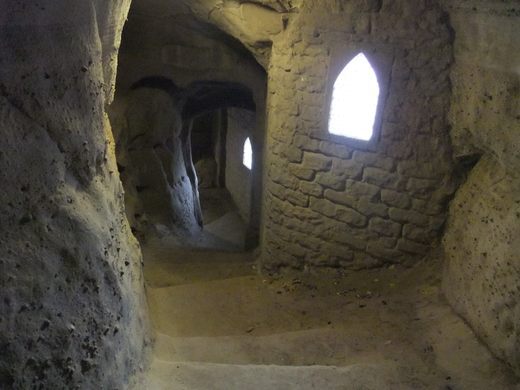
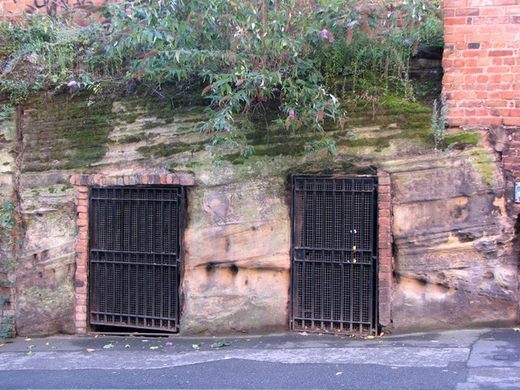
Other great places to visit the caves include the Trip to Jerusalem public house, reputed to be England’s oldest pub, Victorian Music Hall Malt Cross, the Lost Caves cocktail bar, and the Hand and Heart, all of which have cave rooms for drinking and eating in, and the Bell Inn. If you inquire in advance, the Bell can arrange tours of its caves underneath the Old Market Square, including one that contains a well once used by local monks for brewing ale. Live action puzzle fans are accommodated in one of the city’s latest labyrinths to be made publicly accessible; the “Cave Escape” escape rooms can be found in gloomy subterranean chambers and tunnels beneath Mansfield Road.
29 September 2022 - ANCIENT ROMAN RUINS FOUND BENEATH LIBRARY - ITALY
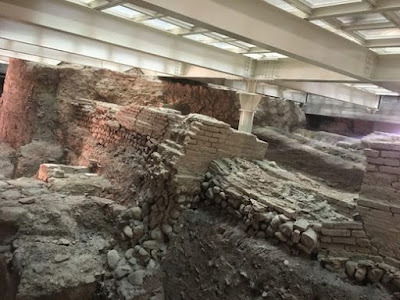
ANCIENT ROMAN RUINS
FOUND BENEATH LIBRARY
- ITALY -
G'day folks,
The remains of an ancient Roman city are hidden underneath Bologna's beautiful public library.When the Romans designed the city of Bologna in the 2nd and 3rd century BC, they really built it to last. And last it did: Excavation of the historic center of Bologna in the 1990s uncovered the two main streets built during the Roman Empire, still intact beneath the gorgeous Salaborsa Library in the city’s most popular piazza.
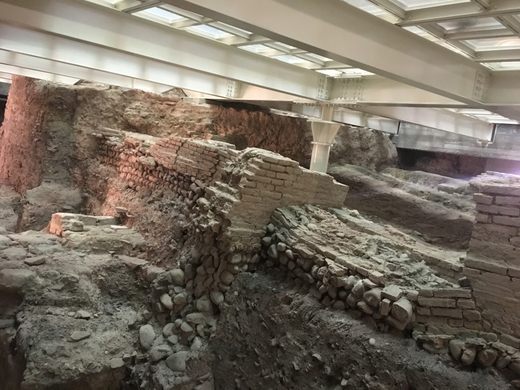

The Salaborsa Library (Biblioteca Salaborsa) is a modern space housed within a beautiful historic building, sitting on top of an extraordinary piece of history. You can see the underground ruins from the main room in the library, through the clear glass panes in the floor. It’s worth getting a closer look though, so head downstairs to the small museum to further explore this hidden remnant of antiquity.
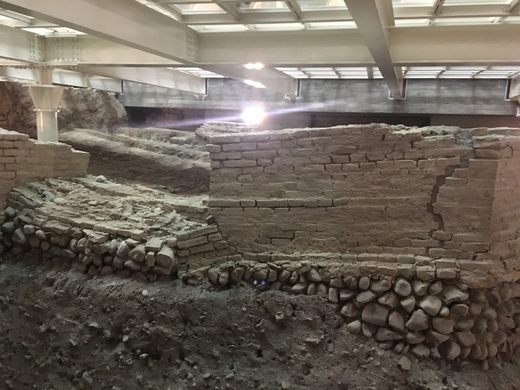
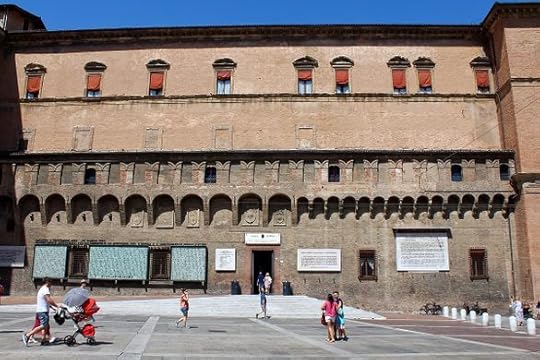
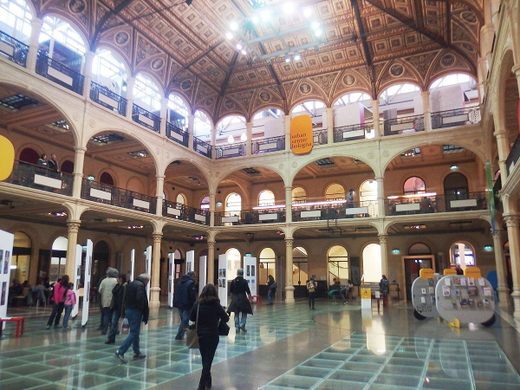

Before you enter the archaeological area, there is a timeline of the history of Bologna, at the end of which is a door. Through the door, you are transported back in time, surrounded by ancient building foundations, a well, and even an ancient sewage system. A kind Italian guide may even be available to point out the different layers of history, which are clearly visible in the remarkably preserved structures. The deepest, oldest levels of the ruins may date back even earlier than the founding of Bologna, suggesting a settlement already existed here before the Romans.
July 7, 2022
19 September 2022 - THE GREAT ORME COPPER MINES - WALES
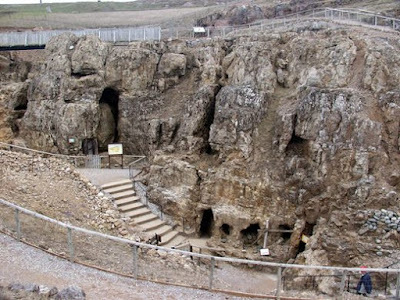
THE GREAT ORME
COPPER MINES
- WALES -
G'day folks,
The world's largest prehistoric copper mine had 30,000 animal bones scattered throughout the maze of passageways.This 3,500-year-old copper mine lies beneath a hillside in Great Orme, Wales. The mine, deemed the largest prehistoric copper mine in the world, is estimated to have produced enough copper to make nearly 2,000 tons of bronze. One archaeologist dubbed it “the Stonehenge of copper mining” because of it’s historical grandeur.
The ancient maze of passageways was discovered in 1987 during a landscaping scheme. Over five miles of tunnels, passageways, and caverns wind throughout nine different subterranean levels. At its deepest, the mine stretches down to about 230 feet below ground. Some of the tunnels are so narrow it’s believed they were carved by children no more than five years old.
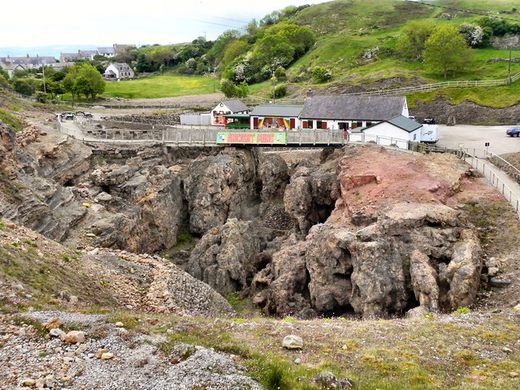
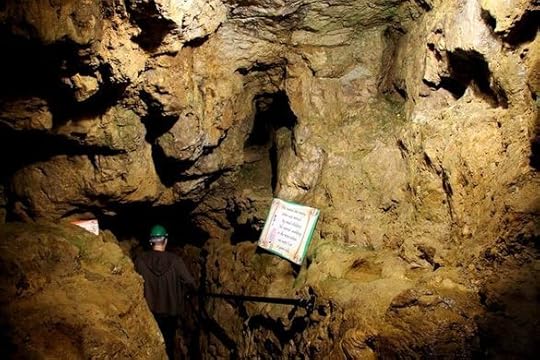
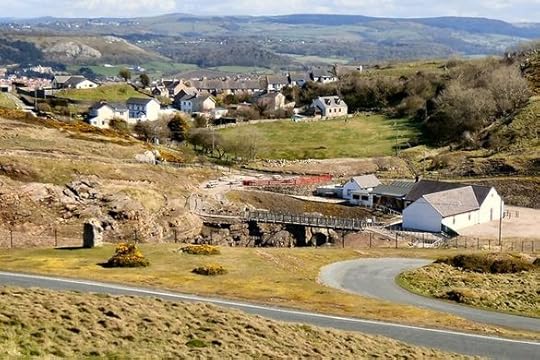
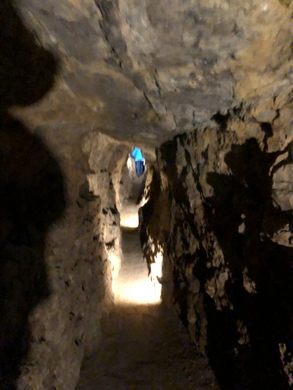
There were over 30,000 animal bones found scattered throughout the maze of passageways. Bronze age workers created the mine by using stone hammers and tools made from animal bones. However, some of the animal remains discovered inside may have been put there as part of some sort of ritual. There were also hundreds of Bronze Age artifacts, such as tools and even human fingerprints.
The massive mines were abandoned sometime around 600 BC until the Romans reopened them for a brief stint centuries later. They opened again the late 17th century, but again, the mine became abandoned shortly after. Now, people can once again enter the mines and embark upon a self-guided tour of the narrow, dark tunnels.
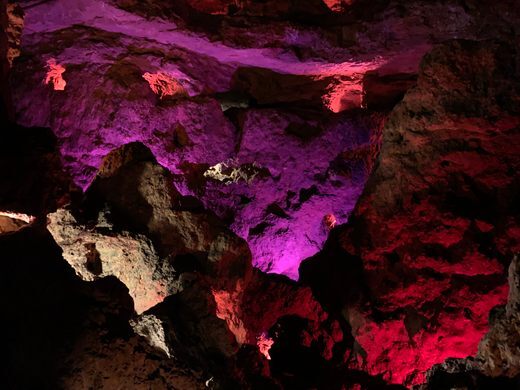

9 September 2022 - THE SMALLEST HOUSE IN GREAT BRITAIN

THE SMALLEST HOUSE
IN GREAT BRITAIN
G'day folks,
A former fisherman's hut deemed too small for habitation is now a delightful tourist draw.Also known as the Quay House of Conwy, the self-proclaimed “Smallest House in Great Britain” is definitely a tiny abode, but it actually looks quite cozy.
The minuscule home was created in the 16th century and remained in use until 1900, when the final tenant was forced to leave by order of the city council. In terms of space, the little home only measures 10 feet deep and not even 6 feet wide. The ceiling is only a little over 10 feet high from the floor to the top of the eave. Remarkably, it is split into two floors. The first floor is devoted to the living area with room for coal and an open fire, and a water tap tucked behind the stairs. The upstairs holds the cramped bedroom, which also comes with a small niche for storage. How luxurious.
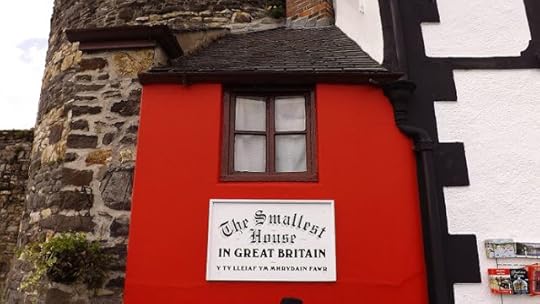
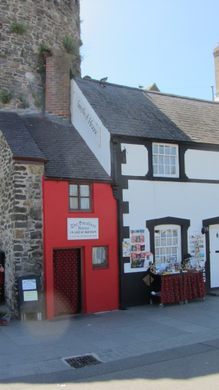

The Quay House has not been lived in since its last owner was made to leave over a century ago, but the interior has been preserved to provide a glimpse of the spartan life of a historic Welsh fisherman. Visitors are welcome to briefly explore the little home, and are usually welcomed by a woman in traditional Welsh garb. They can explore the first floor, but the second floor has become too unstable, although guests can still peek their heads into the still-furnished bedroom.
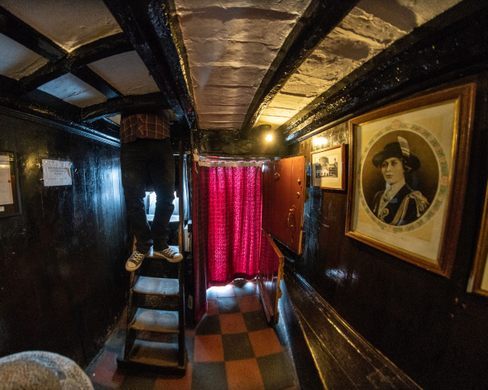
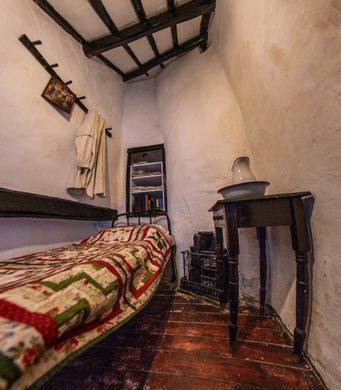
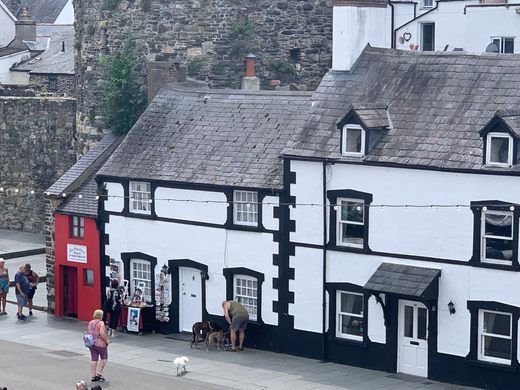
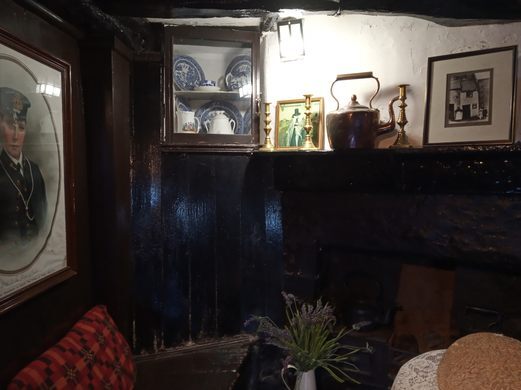
Construction in recent years has seen the number of tourists to the house decline, but the proud smallest house in Great Britain endures.
July 6, 2022
28 September 2022 - STUNNING GOLDEN ARCH IN WALES
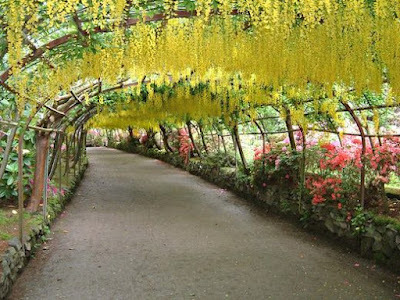
STUNNING GOLDEN
ARCH IN WALES
G'day folks,
Welcome to a breathtaking flower tunnel that bursts with beautiful golden blossoms in Wales.Every spring, this mesmerizing flower arch blooms within a Welsh botanic garden. Golden flowers burst from the branches of the laburnum tree, draping downward to creating a tunnel capped by a lush ceiling of blossoms.
The breathtaking 180-foot-long archway is said to be the longest in the United Kingdom. It was planned by Henry Davis Pochin, the man who created the Bodnant Garden in 1875, and has been enchanting those who pass beneath the ceiling of dangling flowers ever since.



The delicate blossoms are a welcome pop of color to counteract Wales’ often wet, dreary weather. When the tree blooms, its flowers cascade down from the branches like delicate pearls, earning them the nickname “Golden Rain.” Its fallen petals pepper the floor to create a walkway dotted with bright, sunshine-colored spots.
The Laburnum Arch is a fleeting phenomenon. It only lasts for a few weeks, usually in late May or early June. Predicting when exactly the archway will bloom is tricky, as the tree can be a bit finicky depending on the mildness of the winter. But even when not in bloom, the tree’s verdant leaves still create an enticing botanic tunnel. Walking beneath the thick mass of greenery feels like wandering within a fairytale forest.
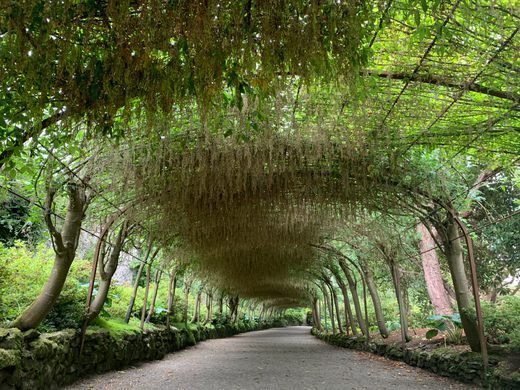
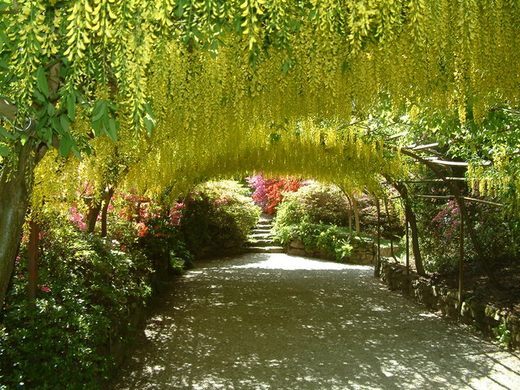
18 September 2022 - HIDDEN FLOWER TUNNEL IN HONG KONG

HIDDEN FLOWER
TUNNEL IN HONG KONG
G'day folks,
In Hong Kong, a fairytale flower tunnel is hidden within the gardens of a public housing complex.Every spring, a magical flower tunnel blossoms within an easily over-looked public housing complex. It’s a fleeting, hidden gem concealed among the crowded buildings of Hong Kong.
Like a secret garden, the tunnel is covered in vibrant Bougainvillea. Come Spring, the tunnel blooms with a ceiling of pink leaves and tiny white flowers growing along the vines that snake over the walkway. The effect is absolutely enchanting.


Walking through the tunnel is like entering a secluded, floral oasis worthy of a fairytale. It instantly makes you feel as though you’ve left the bustle of the city behind and entered a veritable wonderland of nature. The flowers only show up during the Spring, between March and April, adding an extra sense of ephemeral wonder to the experience.
The flower tunnel is part of the Housing Department’s plan to add more green spaces to public housing developments throughout Hong Kong. These fleeting springtime wonders, as well as the year-round pockets of greenery, are meant to provide relaxation and also help reduce heat and pollution in the city.
July 4, 2022
27 September 2022 - REPLICAS OF WORLD WONDERS - CHINA
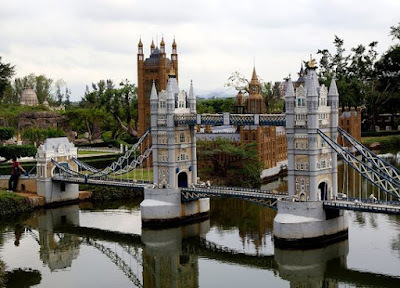
REPLICAS OF
WORLD WONDERS
IN CHINA
G'day folks,
Welcome to 130 replicas of world wonders squeezed into just 118 acres of space.
At the bizarre Window of the World “global village” you will find a life-size Mount Rushmore, London’s Tower Bridge, the Great Pyramids of Giza, a miniature version of Myanmar’s Shwedagon Pagoda, and a scaled-down Taj Mahal replica—all without leaving China.
The Window of the World theme park packs 130 world wonders into just 118-acres in western Shenzhen, located in China’s Pearl River Delta, one of the largest metropolitan areas in the world. Visitors can walk under the Arc de Triomphe, take a gondola down the canals of Venice, navigate the Colorado River down the Grand Canyon, and explore St. Basil’s Cathedral in just one day, so long as their feet can handle it.
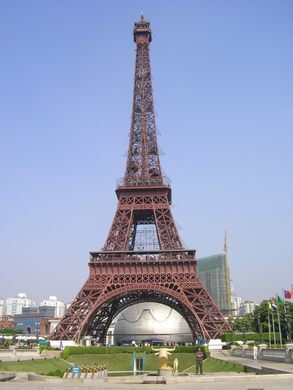
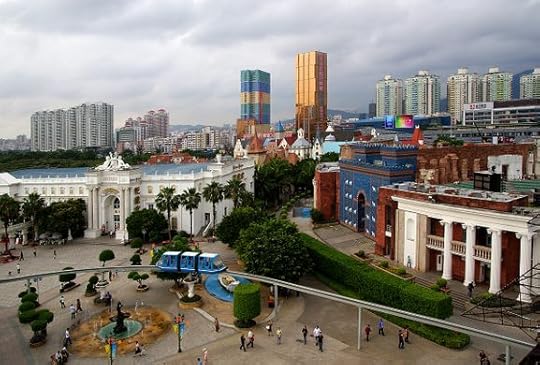
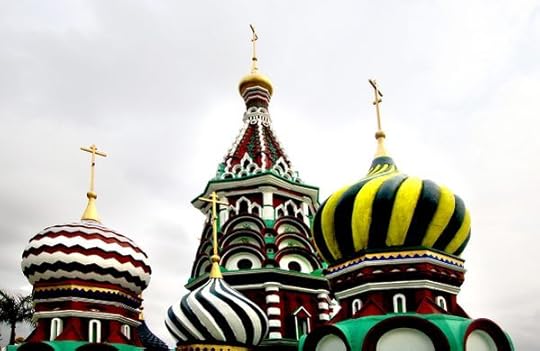


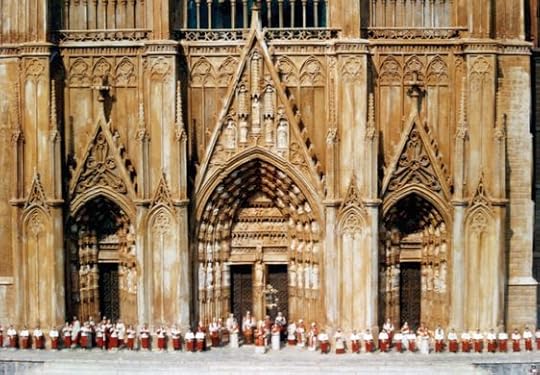
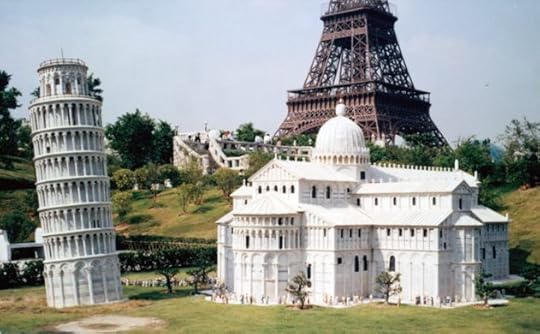

True to its name, Window of the World features replicas of major attractions from every continent (save Antarctica), from Easter Island to Kenya to Italy. An oversized, disproportionately wide globe sits at the entrance, and visible from all directions is one of the largest Eiffel Tower replicas in the world, at one-third scale.
The park also brings different environments to the subtropical climate of southeastern China, including a reproduction of Niagara falls and a massive, climate-controlled indoor ski center, reminiscent of that of Dubai. It also hosts a variety of festivals throughout the year, with a diverse range of themes such as India, Japan, beer, and Santa Claus.
Perhaps the most petrifying attraction at Window of the World is the “Experience of Death” 4D ride, which has been described as the “world’s most disturbing ride.” The experience includes an excruciating 105-degree simulation of being cremated, followed by the passenger emerging in a womb-like room to mimic rebirth.




